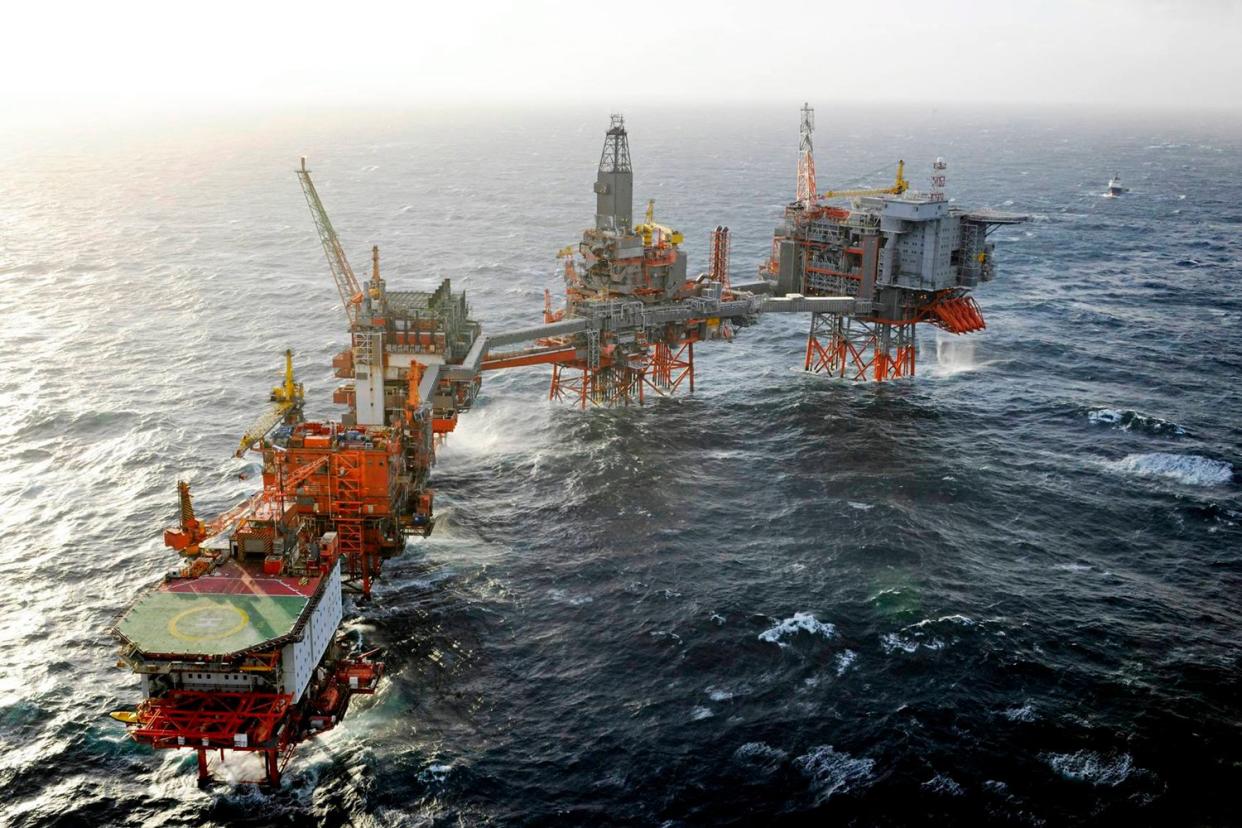Anthony Hilton: The perils of ignoring North Sea oil are very real

In a month when the oil-price benchmark has plunged from $54 to $48, it takes courage to say it will hit $85 before the end of the year.
But that is what happened a few days ago at one of those conferences in London where analysts from leading independent research boutiques sell their expertise and best ideas to professional fund managers.
It is a minority view but that is what makes it interesting — to echo the words of the legendary John Templeton, one of the early hedge-fund pioneers, who noted that no one ever made serious money by following the crowd.
Before fracking techniques were perfected earlier this decade, it was impossible quickly to step up the output of oil. A little extra might be squeezed from existing finds but it took years to locate new fields, develop them and bring them onstream. That rigidity of supply in the face of fluctuating demand meant prices were volatile.
But fracking now makes it possible to turn oil production on and off like a tap, which means supply can adjust quickly to demand — and that should mean the end of volatility. Conventional wisdom has it that oil prices will never again rise much above $55 because fracking in the US becomes economic at or around that price, and will kick in.
But Matthieu Raimbault of Palissy Advisors told his audience this view was too simplistic. Breakeven calculations for the shale producers were “lazy”, he said, and too often based on the cost of an additional barrel from an existing well. However, it cost a lot more than this to start again from scratch, so you needed a much higher price to get things going.
The consensus also underestimated the difficulty of reassembling crews of skilled workers after so many had been laid off; it failed to take into account shortages in essential raw materials like fine sand; and it underestimated the increased cost of hiring drilling rigs when everyone wanted them at once.
That was why he reckoned a continuation of the Opec-induced supply squeeze could push oil to $85 before fracking production kicked in in sufficient volume.
Meanwhile, on this side of the Atlantic, one of the most astonishing omissions in the Government’s industrial strategy document, published earlier this year, was that there was no mention of the North Sea.
This is despite the fact it is this country’s major industrial asset and still has huge potential even with production declining. The mere thought the oil price might spike has significant implications for this country, because it could give a further lease of life to our oil and gas industry.
There are, for example, hundreds of small pockets of oil — some owned by the oil majors, some by the Government via the Oil and Gas Authority, some capped and some abandoned.
These cannot support a full production platform and pipelines but, just as fracking has revolutionised shale production, so it is now possible to mount a drill on a tanker, position the ship above the pocket and milk it.
This is not happening, however, because the industry is at an unfortunate inflexion point with prices so low.
The big companies are pulling out because they only understand big projects, but small firms — with the possible exception of Cairn — are financially too weak to take advantage of the opportunity.
The bigger prize still is the prospect of increased gas production.
The Government likes gas but seems determined to back the wrong horse by giving encouragement for fracking for gas on land — an odd idea for two reasons. First, there is far more unrecovered gas in the North Sea than on land.
So it would make more sense to exploit that initially, given the huge amount of expertise we have, the relative ease of extraction and the massively reduced environmental impact.
Second, even the Americans seem to understand how unpopular fracking will be if it is attempted in a small country like Britain, the more so when it takes place in areas of outstanding natural beauty.
Indeed, they appear to think that the combined opposition from Greens and the wider middle class to a process that fractures rock underground by pumping in a high-pressure mixture of water, chemicals and sand is politically as well as environmentally toxic.
Thus, while all the expertise in this technology is American, no Americans applied for drilling rights in the latest round. That seems to be saying that it will be years before the opposition is overcome.
However, a growing number of small independents are assembling North Sea assets. Industry veteran Algy Cluff, for example, has put together an interesting portfolio through Aim-listed Cluff Natural Resources, and is looking for partners to help finance drilling.
In terms of value for money and helping meet Britain’s immediate energy needs, he is convinced that what he wants to do makes far more sense than potentially offering a $5 billion (£4 billion) subsidy to help build a wind farm on Dogger Bank or taking an even bigger gamble on building a tidal barrage in Swansea Bay.
He is surely right in this, and a country with a sensible energy policy would give him and the other remaining North Sea operators as much support and encouragement as possible in their efforts to extend the life of the assets. Unfortunately, the fact the North Sea failed to get a mention in the key industrial policy document suggests that such common sense is in short supply in Government circles.

 Yahoo News
Yahoo News 
